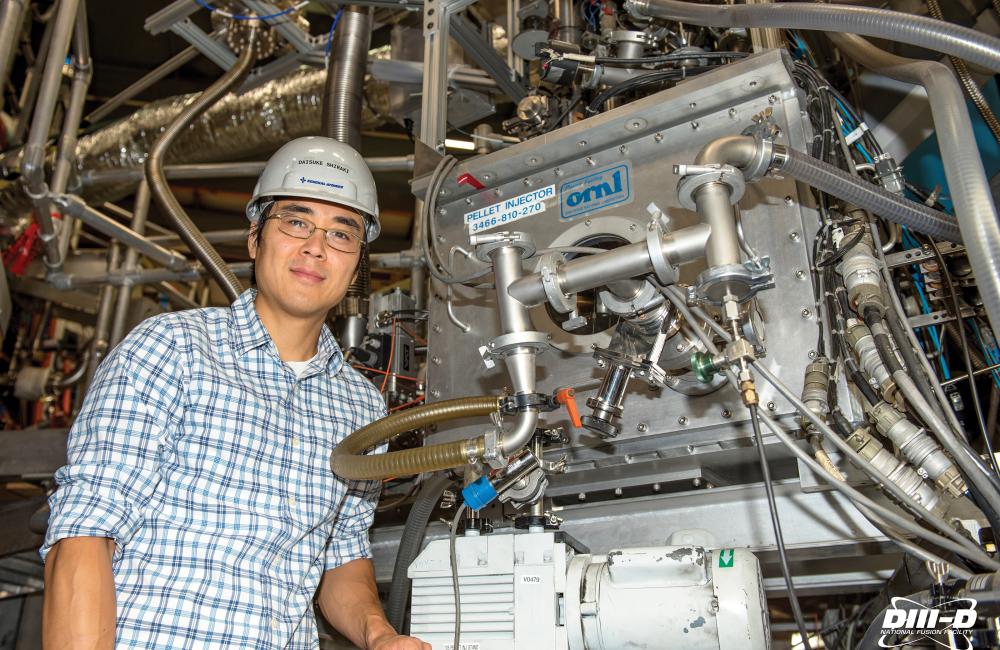Daisuke Shiraki
Researchers preparing for sustained fusion devices must shift from technologies that feed fuel to a fusion plasma’s edge to ones, such as cryogenic pellets, that deliver fuel to the plasma’s core.
Daisuke Shiraki, an experimental plasma physicist in the Fusion Energy Division, is developing pellet-fueling processes to control fusion plasmas at the international ITER fusion reactor and other future fusion devices. Shiraki will carry out his Early Career Research Program award project at the DIII-D National Fusion Facility in San Diego and will provide experimental studies and modeling of the plasma under pellet-fueled conditions.
“The different physics at work in fusion are so interconnected and coupled with each other that as you start to change one thing, it affects other parts of the plasma in complex ways,” he said. “We need to understand that coupling. The big goal of this project is to better integrate the fueling aspect, in particular, with how everything else works.”
Building on the strength of ORNL’s pellet injection research, Shiraki is focused on expanding the technical capabilities of pellet fueling — making a system that is both more flexible and more precise — as the field gets closer to producing a sustained fusion reaction.
“My Early Career Research Program project is trying to take it to the next level with a more complete picture of fusion performance,” he said.
Shiraki’s interest in fusion began in middle school when he found an old physics textbook in his house.
“It was meant for people that are going to medical school. It explained the concepts, but without getting into the gory math,” he said. “What caught my eye was the section on fusion and how it was the energy source of the sun. Fusion holds all these attractive properties and, if you could just figure out how to make it work, it would be this amazing solution.”
His position as an ORNL scientist stationed in the California facility keeps him engaged and interested in his work as he continues to explore how to advance fusion to its next stage.
“DIII-D is a really fun place to work. It’s one of the major fusion labs in the world but, at the same time, I’m still able to do a lot of hands-on work with the hardware for ORNL’s pellet injection systems. It’s a really nice mix of hands-on technical work and the theoretical and analytical side.”



